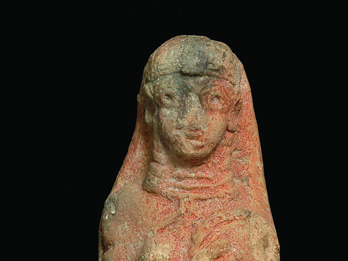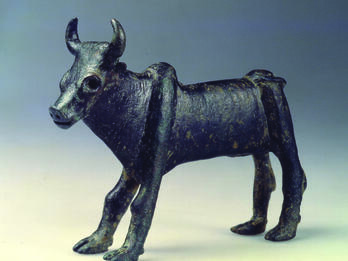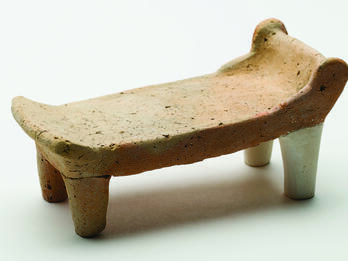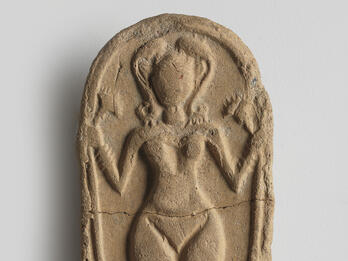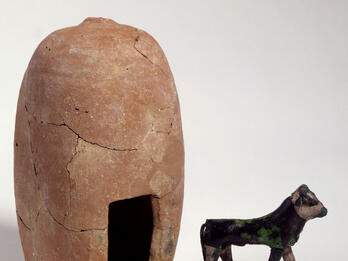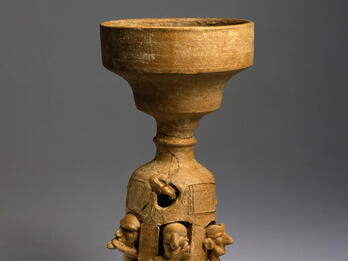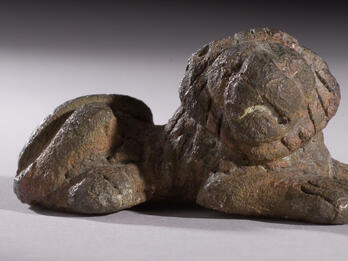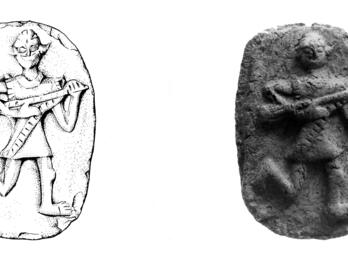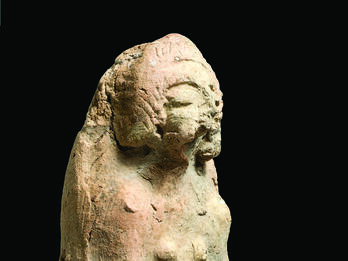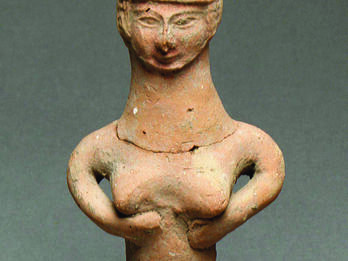Showing Results 1 - 10 of 20
Restricted
Image
There are numerous terra-cotta plaque figurines of females, some naked and others clothed, holding disks, mostly from northern Israel and Transjordan. Many come from border towns and towns whose…
Places:
Hazor, Land of Israel (Tel Hazor, Israel)
Date:
Iron Age II, 9th–8th Century BCE
Categories:
Restricted
Image
This bull figurine, 7 × 5 inches (17.5 cm × 12 cm), was cast in bronze with considerable detail. It combines highly realistic features—horns and ears, genitalia, legs and hooves—with more stylized…
Places:
Samaria, Land of Israel (Samaria, Israel)
Date:
Iron Age I, Early 12th Century BCE
Subjects:
Categories:
Restricted
Image
Since chairs and beds were valuable items and not found in average homes (people usually sat on the floor and slept on mats), it is possible that terra-cotta models like this one from Lachish…
Places:
Lachish, Land of Israel (Tel Lakhish, Israel)
Date:
Iron Age IIB, 8th Century BCE
Subjects:
Categories:
Restricted
Image
Figurine of female deity, Tel Batash, 14th century BCE. Similar plaque figurines of naked women, often with breasts and genitals emphasized or with pregnant bellies, were very common in the ancient…
Places:
Tel Batash, Land of Israel (Jerusalem, Israel)
Date:
Late Bronze Age, 14th Century BCE
Subjects:
Categories:
Restricted
Image
Figurine of calf and shrine, Ashkelon, 1600 to 1550 BCE. Some of the non-anthropomorphic figurines found at Israelite sites had religious significance, especially model shrines (such as the Model…
Places:
Ashkelon, Land of Israel (Tel Ashkelon, Israel)
Date:
Middle Bronze Age, 16th Century BCE
Subjects:
Categories:
Restricted
Image
Musicians on ritual stand, Ashdod, late 11th or early 10th century BCE. Music and dance played an important role in Israel and the ancient Near East in both daily life and special occasions such as…
Places:
Ashdod, Land of Israel (Tel Ashdod, Israel)
Date:
Iron Age I, Late 11th or Early 10th Century BCE
Subjects:
Categories:
Restricted
Image
Lion-shaped weight, Arad, Iron Age II (ca. 980–586 BCE). A balance scale would use weights to measure goods. Weights were usually dome-shaped, but some were shaped like animals. This well-preserved…
Places:
Arad, Land of Israel (Tel ‘Arad, Israel)
Date:
Iron Age II, 8th Century BCE
Subjects:
Categories:
Restricted
Image
On this clay plaque from Dan, from the Late Bronze (Canaanite) period, a man is playing a lute while dancing. The position of the performer’s legs shows that he is doing a lively dance.
Places:
Dan, Land of Israel (Tel Dan, Israel)
Date:
Late Bronze Age, 16th–13th Century BCE
Subjects:
Categories:
Restricted
Image
In this terra-cotta plaque figurine from Tell Beit Mirsim, 6 inches (15 cm) high, the pregnant woman’s arms cradle her belly and her navel and genitalia protrude. Incisions indicate the eyes, the hair…
Places:
Tell Beit Mirsim, Land of Israel (Tell Beit Mirsim, Israel)
Date:
Iron Age I, 12th–10th Century BCE
Subjects:
Categories:
Public Access
Image
Terra-cotta pillar figurines are found throughout the biblical territory of Judah and date to the eighth to seventh centuries BCE. Most were decorated with a white background layer and one or more…
Places:
Lachish, Land of Israel (Tel Lakhish, Israel)
Date:
Iron Age IIB–IIC, 8th–7th Century BCE


